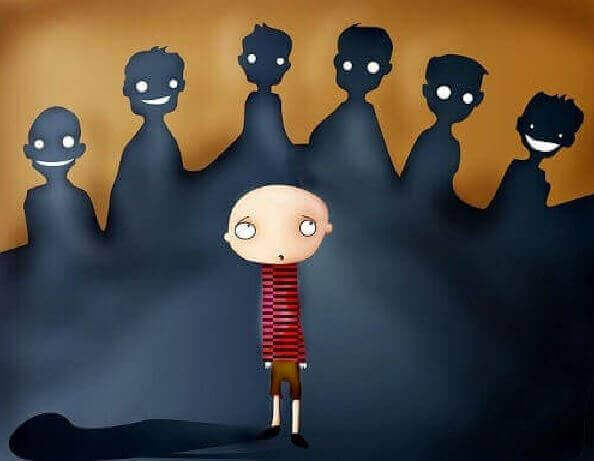The text you will read now is an expression of the suffering of a family and a child harassed at school, the text expresses how anguish consumes the days of the victim and what are the most immediate consequences of this painful suffering:
“We don’t know what’s happening to him. He has constant stomachaches and headaches, he doesn’t sleep as well as he used to, he wakes up anxious every night and comes to our bed, he worries too much about some things he didn’t have. ” I hadn’t even thought before.
- He has sudden mood swings.
- One second he’s calm and the next second he’s very angry and starts crying uncontrollably.
- Sometimes he’s rebellious even when we tell him to stop biting his nails or pulling his hair off.
- Behaviors we’ve never seen before.
Something bothers him, but we don’t know what it is because he doesn’t talk to us, we suspect something is going on at school, maybe he’s under a lot of pressure, or maybe a child is causing trouble. We constantly wonder how he is, let us also ask his teacher, his brothers, the relatives of his friends. but no one knows anything or gives any information.
Sometimes he is very needy and, although he has always been a very affectionate child, the addiction he develops begins to worry us, exaggerates our attention at certain times of the day, and since we do not know why all this happens, we take the time to try to identify the source and talk to him about what is going on in his life.
Sometimes he shuts down completely and says he doesn’t want to talk, that he’s embarrassed, but other times he tells us he doesn’t want to go to school, that something bad is going on there. that there is a group of children who mock him, curse him, play with each other as they talk about him and even beat him.
Our world has collapsed. Finally, we name the origin of his pain, all his anguish and discomfort. The name is bullying at school.
We immediately made the first step: talking at school, that had to be solved. There are consequences for these children, our son can no longer go through what happened, neither ours nor anyone else’s.
It’s time to organize ideas to think about what we can do, how we can act, it’s hard when it happens to you and you have to remember to tell things to children’s children and families that are bothering your child. However, it is best to prevent the child from participating in conflicts or direct clashes.
So right now we are waiting and trying to control our uncontrolled emotions, these feelings that arise do not make us think very clearly, but by giving time to time and moving away from the situation, it is easier to think in the best way. Act.
The important thing at this first moment is to create a safe environment for our son, we are already working on it, we are doing everything possible about it, the university will also start acting. Teachers and friends will be attentive to every move and gesture the aggressors make against our child.
But that’s not all. The emotional injury that this bullying has caused our child continues and will remain there, even if we already help him, he is still afraid and the anguish is still there, as well as the refusal to go to school. Do??
Helping a bullied child cope with the emotional damage caused by abuse is not an easy task for families How can we make this task less difficult?
NOTE: The child may persist in refusing to attend school even if the control needed to prevent bullying has already been established by the school, it is important that we explain that the environment is already safe, that it is good to go to school. and that going back to school will help you feel better, a little more every day. Can we facilitate this reintroduction process?gradually expose the child to the school environment: meetings with friends, walks near the school, or even reintroduction of a few hours in the most severe cases, until the child understands that there is no danger and can attend all day without distress.
Children and their families who are harassed at school are suffering greatly, it is essential that those around these families demonstrate understanding and empathy for the great pain that is generated in these situations, it is also essential to educate children about the values of respect, tolerance and, at the same time, intolerance of violence and cruelty, the best way to do so is to speak openly about the subject from an early age , with language appropriate to your understanding, and set an example from the practice of anti-discourse of intimidation within the family.

